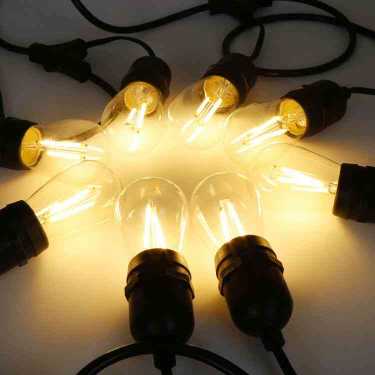Common Problems when the Luminosity of LED Lights is Weak
LED lights have revolutionized the lighting industry with their energy efficiency, long lifespan, and versatility. However, users may encounter situations where the luminosity of LED lights is weaker than expected, diminishing their effectiveness. In this article, we will explore common problems that cause LED lights to have weak luminosity and provide possible solutions.

1. Insufficient Power Supply: LED lights require an appropriate power supply to operate at their full potential. If the power supply is inadequate or not compatible with the LED lights, it can result in reduced luminosity. Ensure that the power supply meets the specifications recommended by the LED light manufacturer. It is recommended to consult an electrician or follow the manufacturer's guidelines for proper power supply installation.
2. Incorrect Installation: Faulty installation can also lead to reduced luminosity. Improper connection of wires, incorrect positioning of LED bulbs, or loose connections can all contribute to weak light output. Double-check the installation instructions provided by the manufacturer and ensure proper wiring and connections are in place. If needed, seek professional assistance for installation.
3. Overloading the Circuit: Overloading the circuit can cause a drop in voltage, resulting in dimmer LED lights. Check if the circuit is overloaded with other electrical appliances or if the wiring is outdated. Upgrade the circuit or redistribute the load to ensure optimal voltage supply to the LED lights.

4. Poor Heat Dissipation: LED lights generate heat during operation, and inadequate heat dissipation can affect their luminosity. Ensure that the LED lights are installed in a well-ventilated area and are not covered or obstructed by other objects that restrict airflow. Consider using heat sinks or fans to dissipate excess heat and improve luminosity.
5. Aging or Defective LED Components: Over time, LED components may degrade or become defective, resulting in reduced luminosity. Check the lifespan of the LED lights and replace them if necessary. If the LED lights are relatively new, it is possible that there are defective components. Contact the manufacturer for warranty claims or replacements.
6. Environmental Factors: Environmental factors such as humidity, temperature, and dust accumulation can affect the performance of LED lights. Ensure that the LED lights are suitable for the specific environmental conditions they are installed in. Clean the LED lights regularly and keep them away from moisture and extreme temperatures.

7. Incompatible Dimmer Switches: LED lights are not always compatible with conventional dimmer switches designed for incandescent bulbs. Using such dimmer switches can lead to reduced luminosity or flickering. Check if the LED lights require dimmer switches specifically designed for LED lighting and replace any incompatible switches.
By considering these common problems and implementing the suggested solutions, you can troubleshoot and resolve the issue of weak luminosity in LED lights. Enjoy the full potential of LED lighting by ensuring proper installation, compatible power supply, and good heat dissipation.


viber

skype

whatApp

telegram


 France
France
 Spain
Spain
 Portugal
Portugal